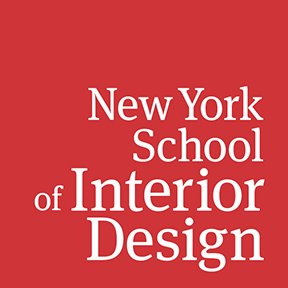Empowering Designers to Help Victims of Violence
In this second installment of our two-part series on NYSID’s 2020 summer service learning studio, we look at the designs produced for Safe Horizon, an organization that provides shelter and services to survivors of violence and their children.
“It was satisfying to know that our designs for the domestic violence shelter could help the residents in their healing journey. It was designing with a purpose, not just about aesthetics. ”
Bubble Diagram, Lobby and Visitor’s Room
When New York City locked-down last Spring in response to the pandemic, internship opportunities evaporated and travel-study became impossible for many NYSID students. Summer 2020 could have been lost time for students in the professional-level Master of Fine Arts program, who are all required to do experiential learning each year in each of their first two years. In order to avoid this, NYSID added a second section of service learning to meet the demand from students looking to work with real clients (read the SUNY College of Optometry story.) Terry Kleinberg, the faculty member who has led the studio for the past four years, trained her colleague, faculty member David Burdett, to lead the Safe Horizon section of the course, which focused on a residence and emergency shelter for victims of violence. Says Burdett, partner at DAS Studio, “There is really no substitute for working with real clients with specific requirements and budgets. My students were tasked with using affordable-housing levels of materials to create a new condo atmosphere. They embraced the idea of creating a space where people would feel safe and have a sense of home and community. I was impressed by their ability to draft up things that were so professional after only one year in the MFA.”
Understanding Survivors
The students worked with the floor plan of an existing apartment building, and were responsible for designing areas of two floors of communal spaces that included childcare rooms, recreation rooms, an outdoor space, a lounge that had to double as a therapy room, a lobby, and reception area. The design team included Praveena Aleti, Jung-Chen Chih, Benny Seda-Galarza, Michal Greenbaum, Yevgeniya Khatskevich, Anna Love, Lauren Moonan, April Podlaski, Nelson Sanchez, Diana Seserman, Yu-Wen Wang, and Sheng-Wei Yang. For the first weeks of the program, they interviewed their clients virtually and conducted research on the end users of the space. They learned that victims of violence must have a sense of agency/choice (they cannot feel trapped when they enter a space) and that elements of nature are helpful to people with post-traumatic stress. Says Burdett, “The students and I learned so much about abusive relationships and trauma. Perhaps the hardest thing to learn was how frequently people go back to their abusers. This really lit a fire under my students, inspiring them to make the building welcoming and non-institutional—a place to help survivors get their lives back on track.”
Floor Plan, Lobby and Visitor’s Room
Lobby looking towards visitor’s room
Visitor’s Room
Seda-Galarza, a member of the team that designed the lobby and the visitor’s room, says, “The original entrance of the shelter was dark and had an institutional aesthetic. My team proposed a space where people would feel welcomed and at home when they walked into the building. We accomplished this by bringing nature into the space. We added greenery and elements that resemble nature, as well as multiple layers of lighting, and the room went from clinical to vibrant and welcoming.” Three Master of Professional Studies in Lighting Design (MPSL) students—Badar Munir, Korapin Srisom, and Jung Yoon—volunteered their time to advise on the lighting throughout the building.
Burdett was impressed with an idea that came from the team that designed the childcare rooms. He says, “That team created custom pieces: play areas that would allow kids to read or play in a cubby hole at the bottom, with storage areas above. It was such a nice creative solution that addressed the budget constraints. The students explored the idea in SketchUp, producing design-intent drawings to be sure it could be built.”
Toddler Room Storage (Regular View)
Toddler Room Storage (X-Ray View)
Childcare Room (View 1)
Childcare Room (View 2)
Diving into the Digital Deep End
Most of the students in this course had never produced a design proposal for a real client before, and because of COVID-19, they had to accomplish this from a distance. Says Burdett, “We were diving into the deep end, and we had to work in the abstract.” Safe Horizons provided measurements, floorplans, and digital walkthroughs, but two of the students decided to visit the building when the common spaces were empty to take pictures. These two students coached their peers on the space. “The students adapted beautifully,” says Burdett, “There are some benefits to teaching design online. There is no retreating to the back of the classroom in Zoom, so everyone is engaged in the critique and development of the design in a more collaborative way than usually occurs in the classroom. In Zoom, I can take over their screen and actually sketch and annotate the drawings for them. Some really positive things came out of this.”
Adds Seda-Galarza, “The digital learning format was not how I envisioned my ‘internship’ initially, but the experience was equally gratifying. Online learning made me much more proactive about engaging with classmates and colleagues to successfully finish the project. . . .Designing this proposal for Safe Horizon reminded me of the power of designers and how we can influence the behavior of people.”


